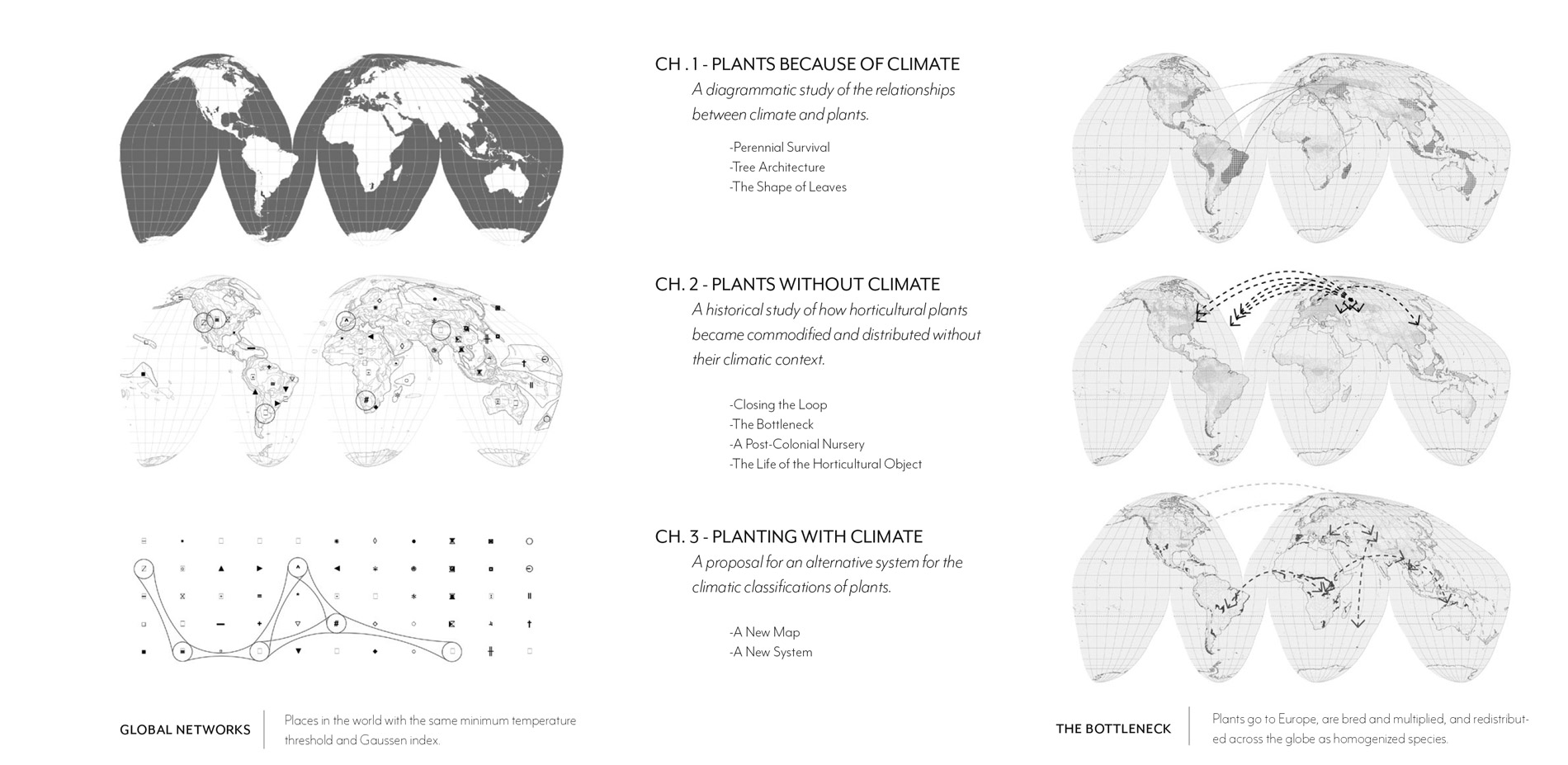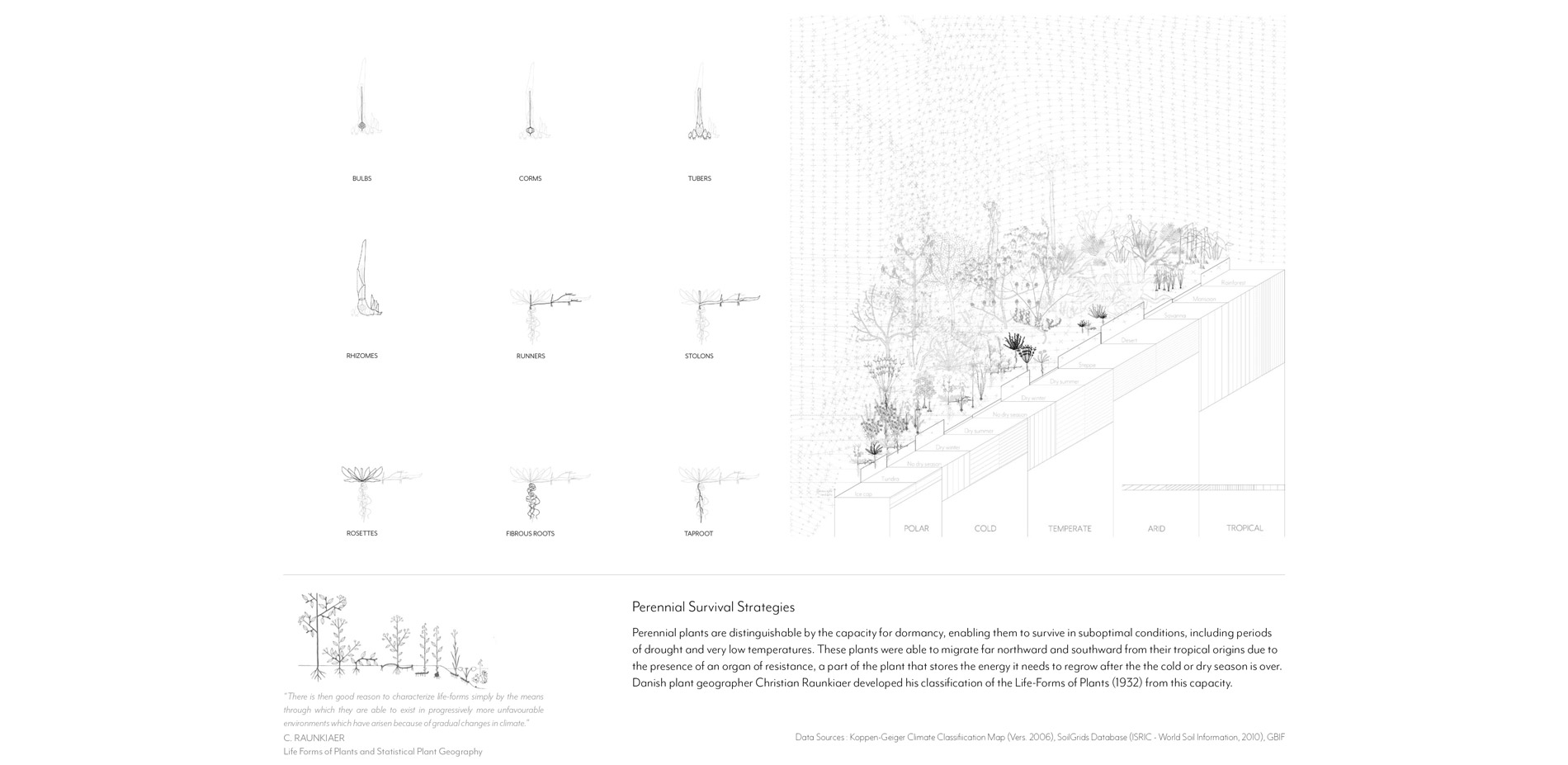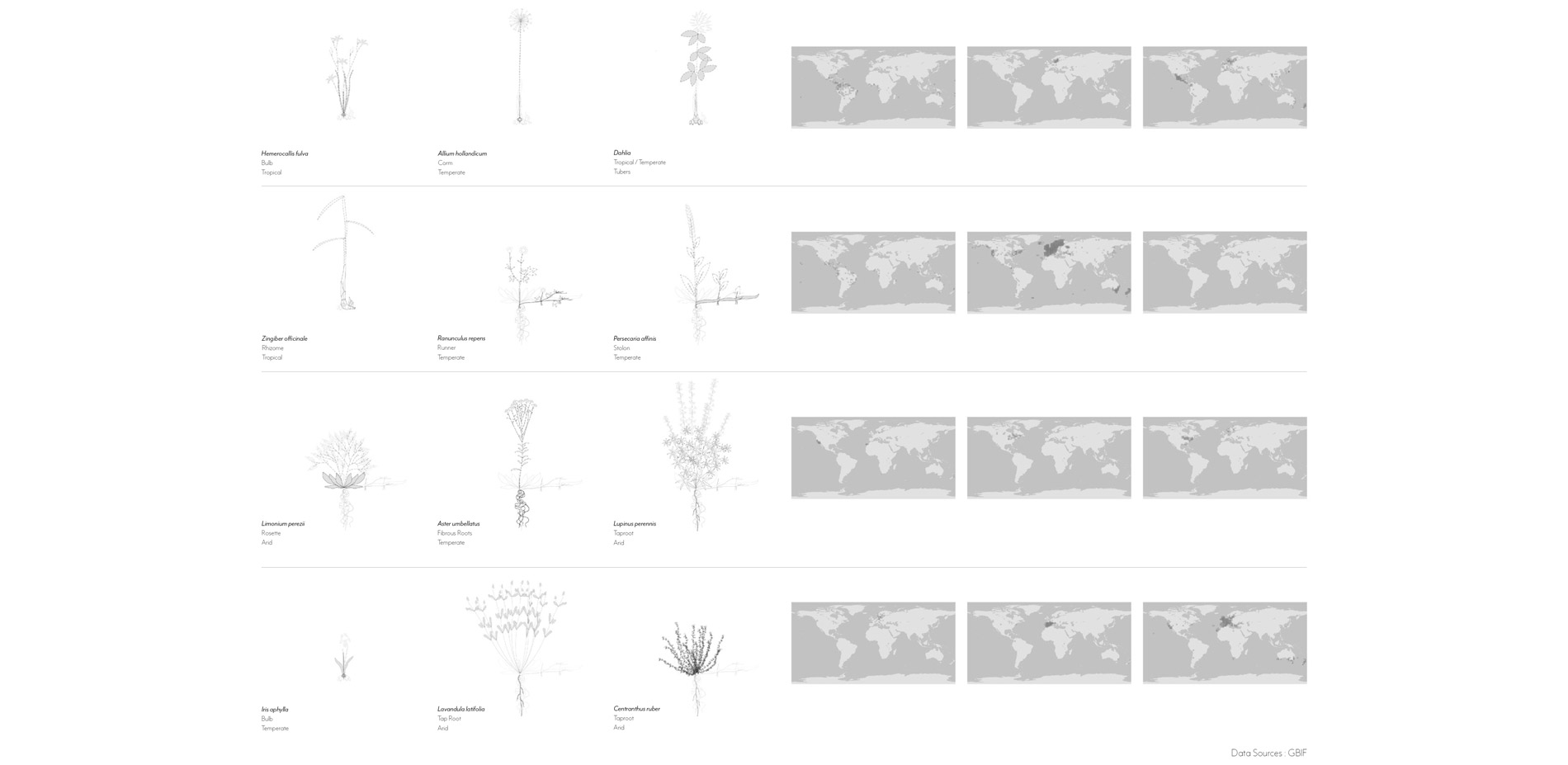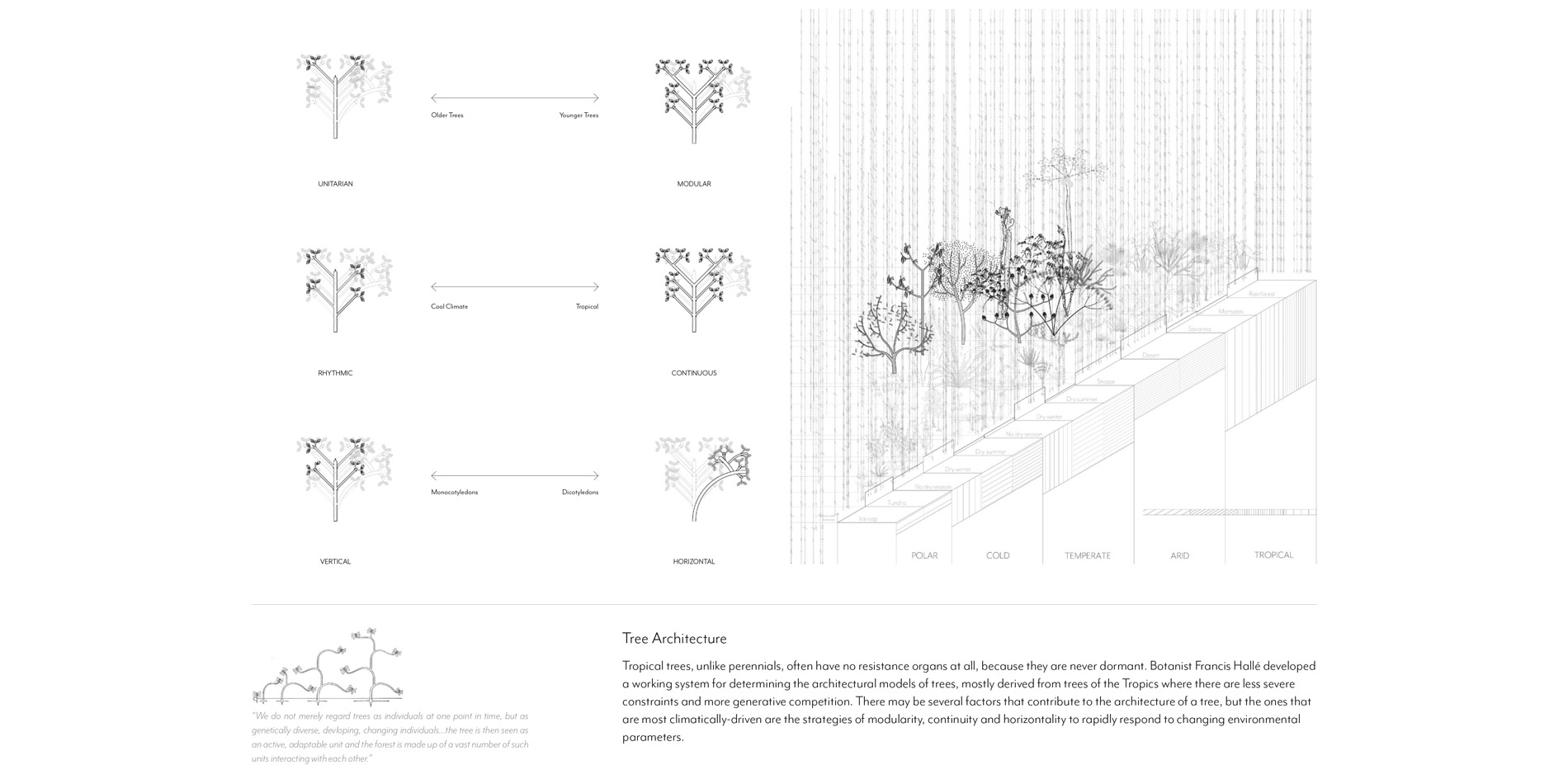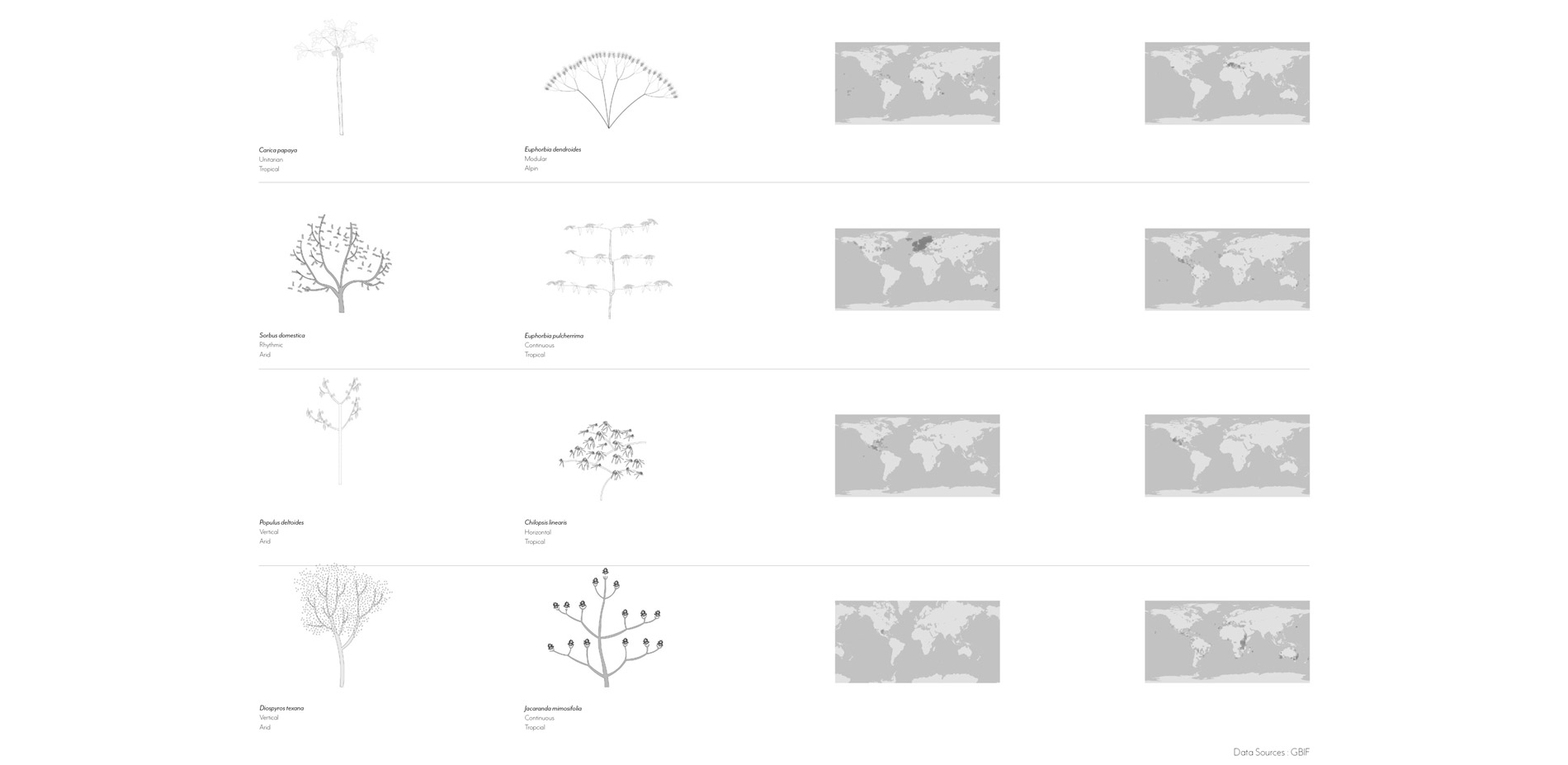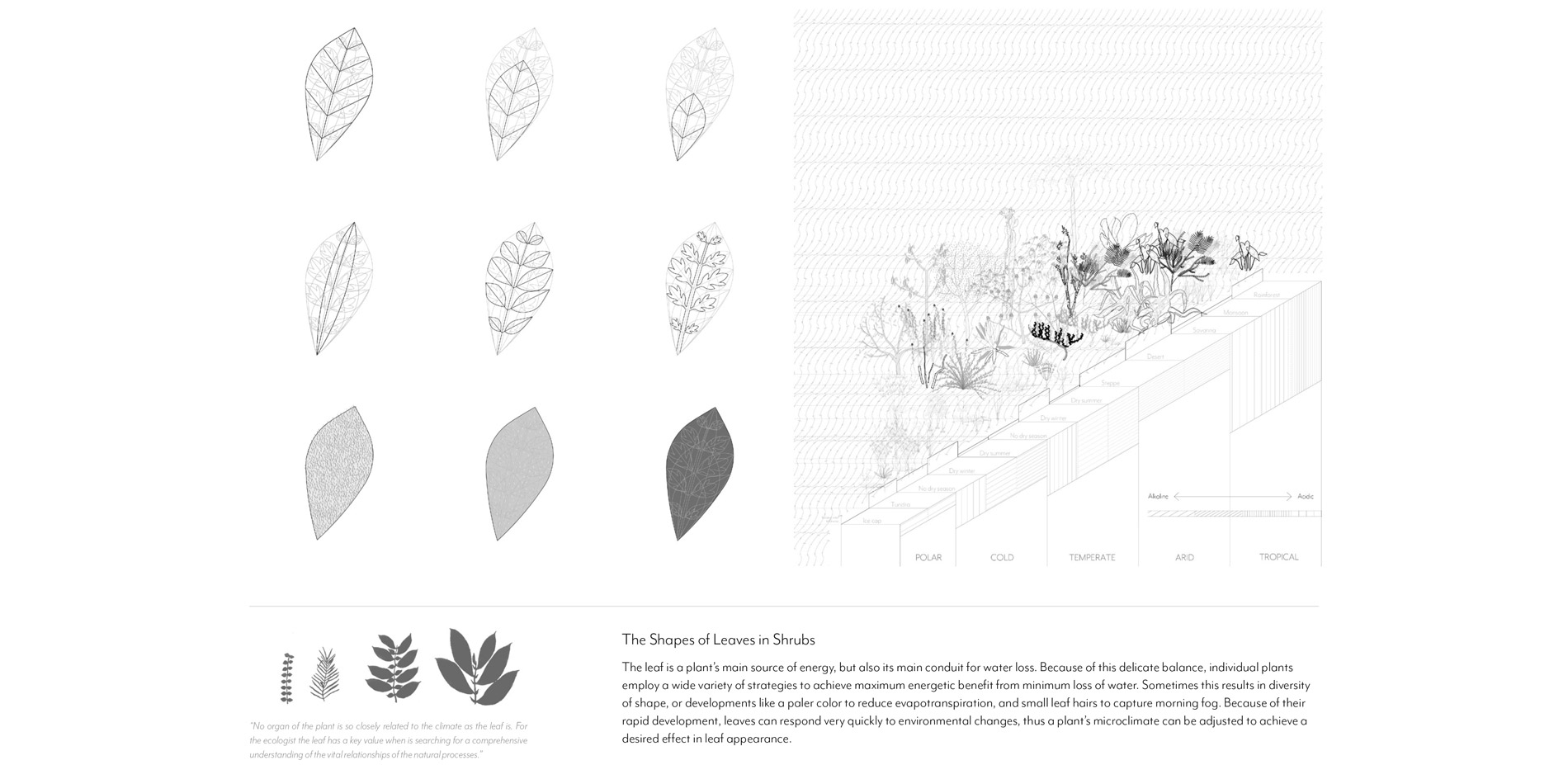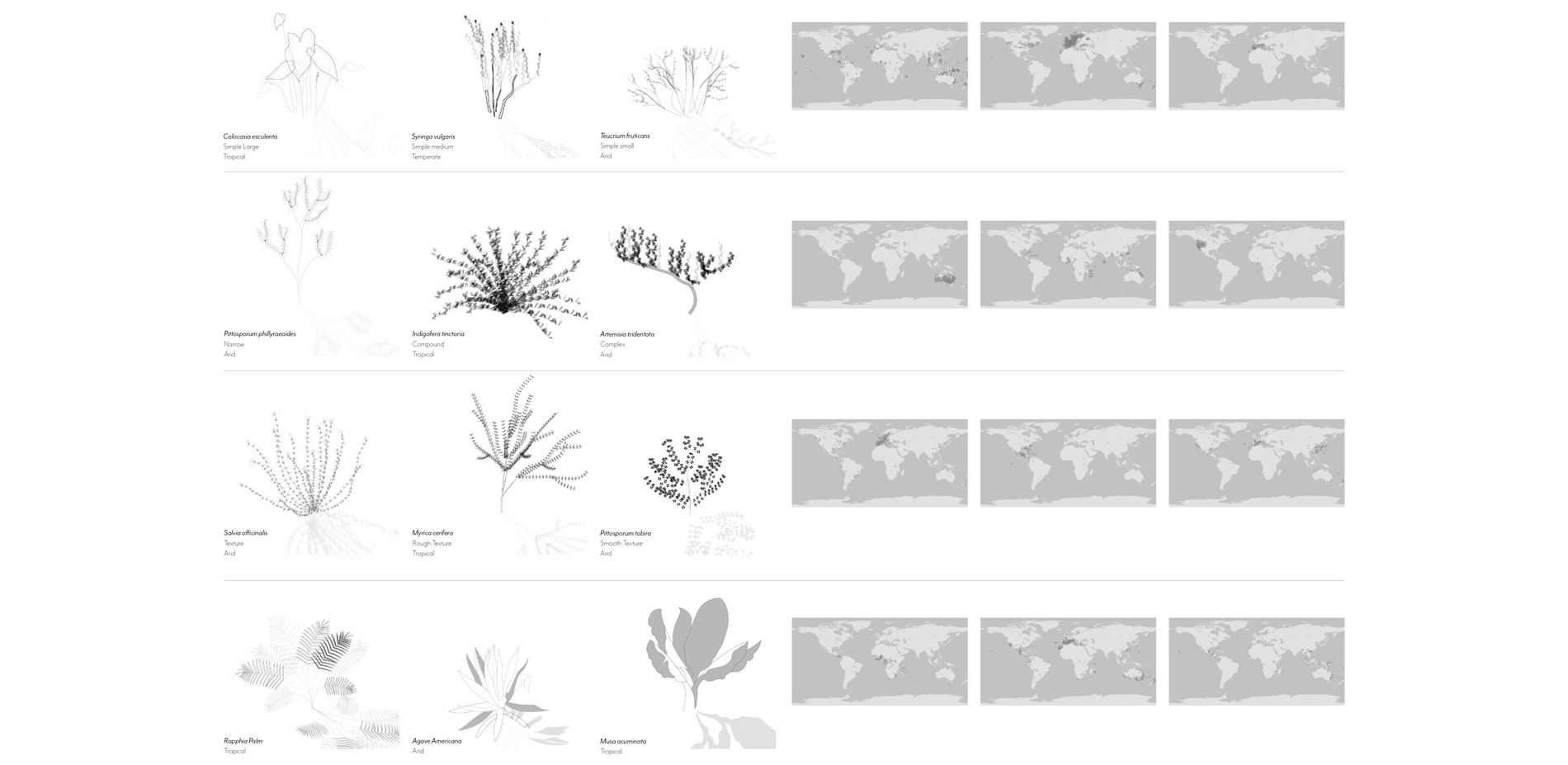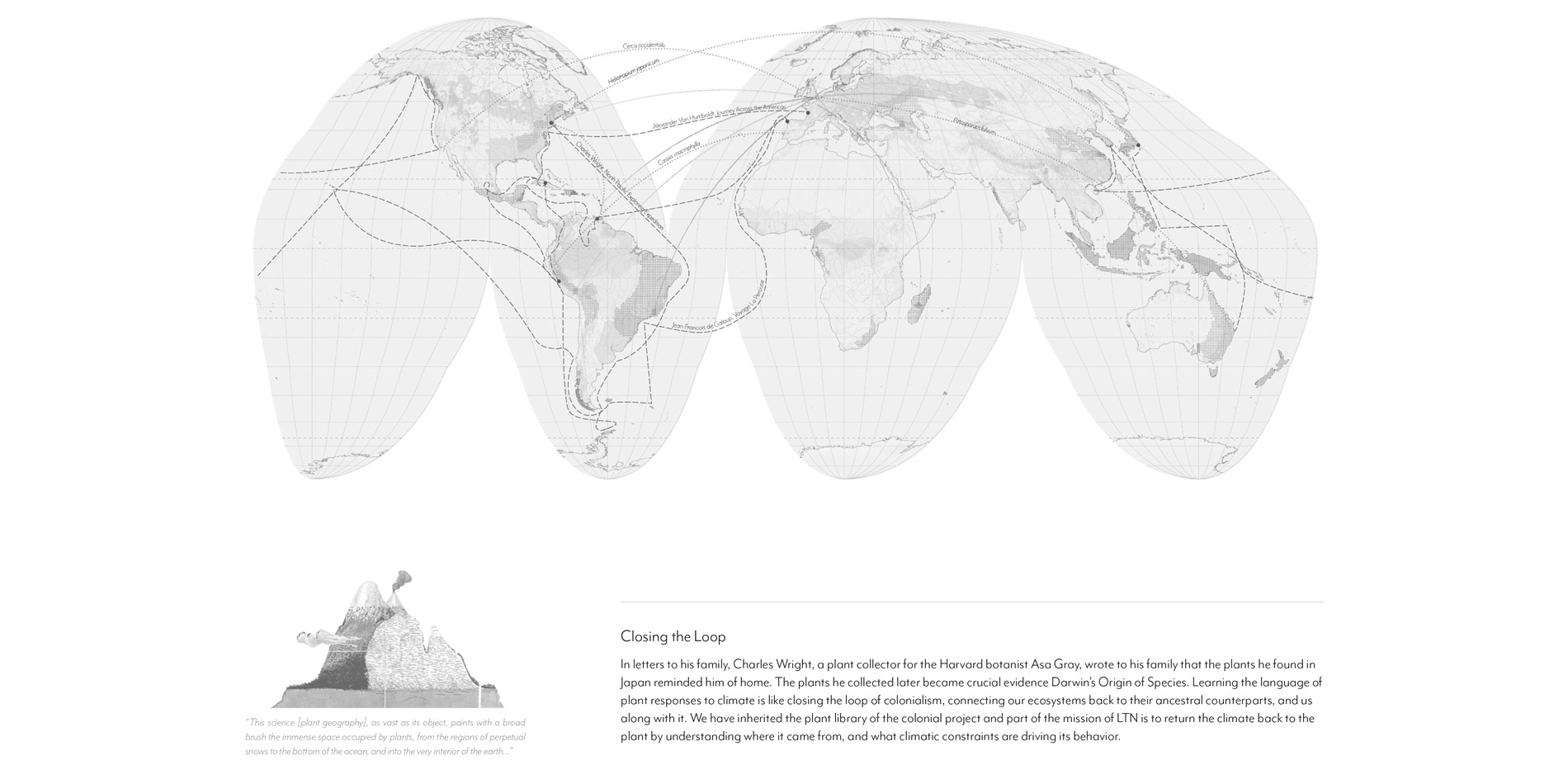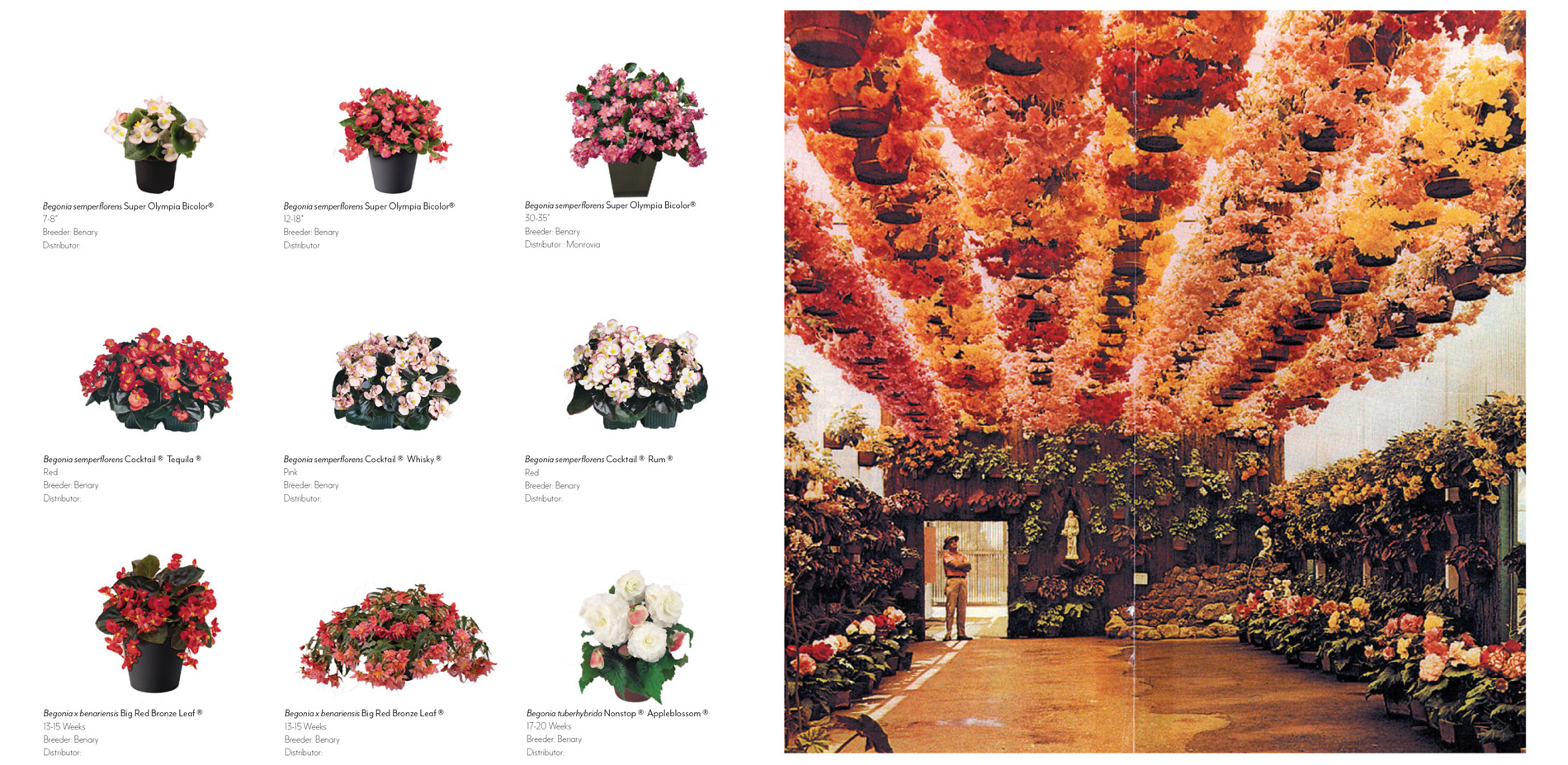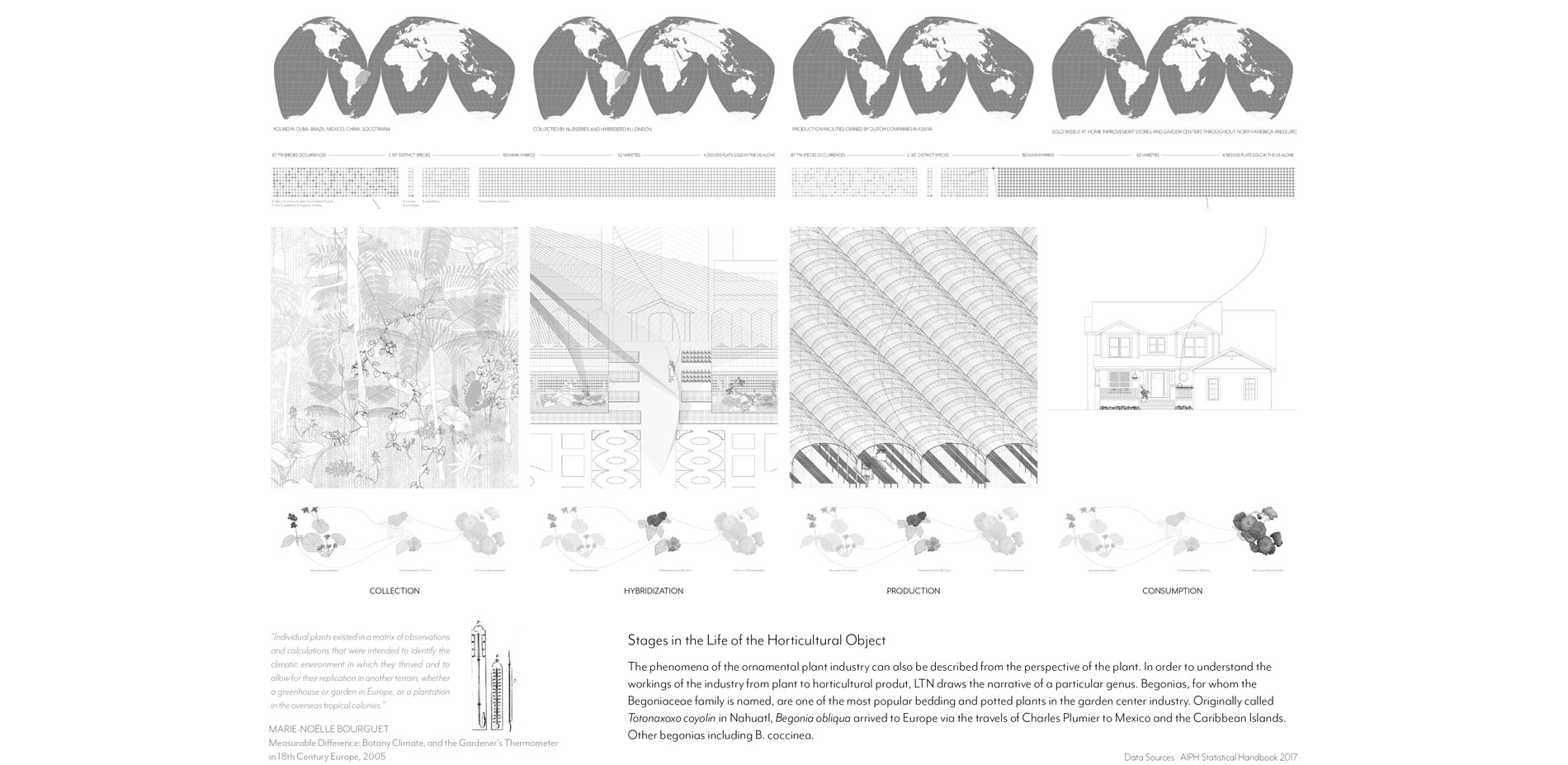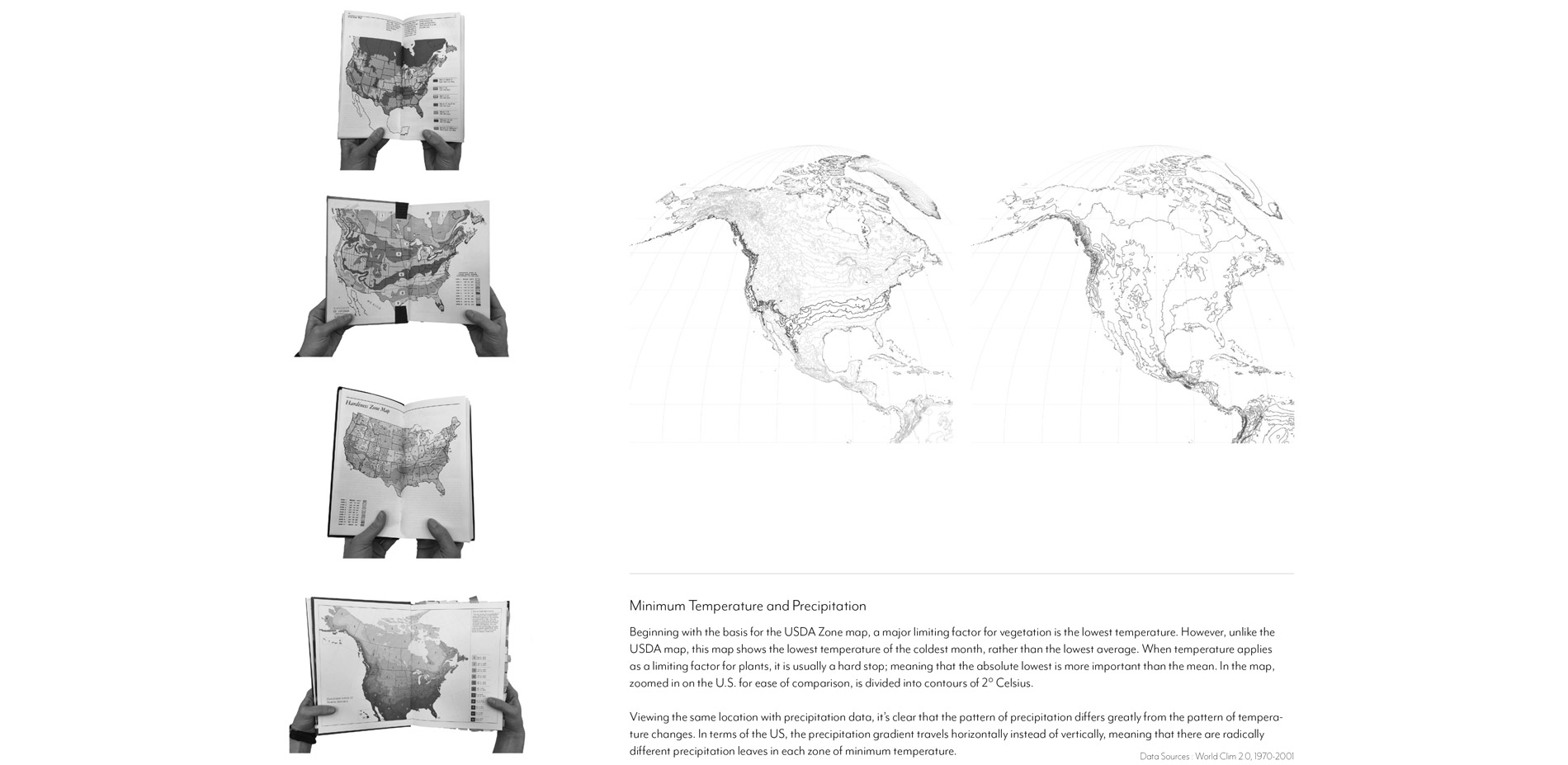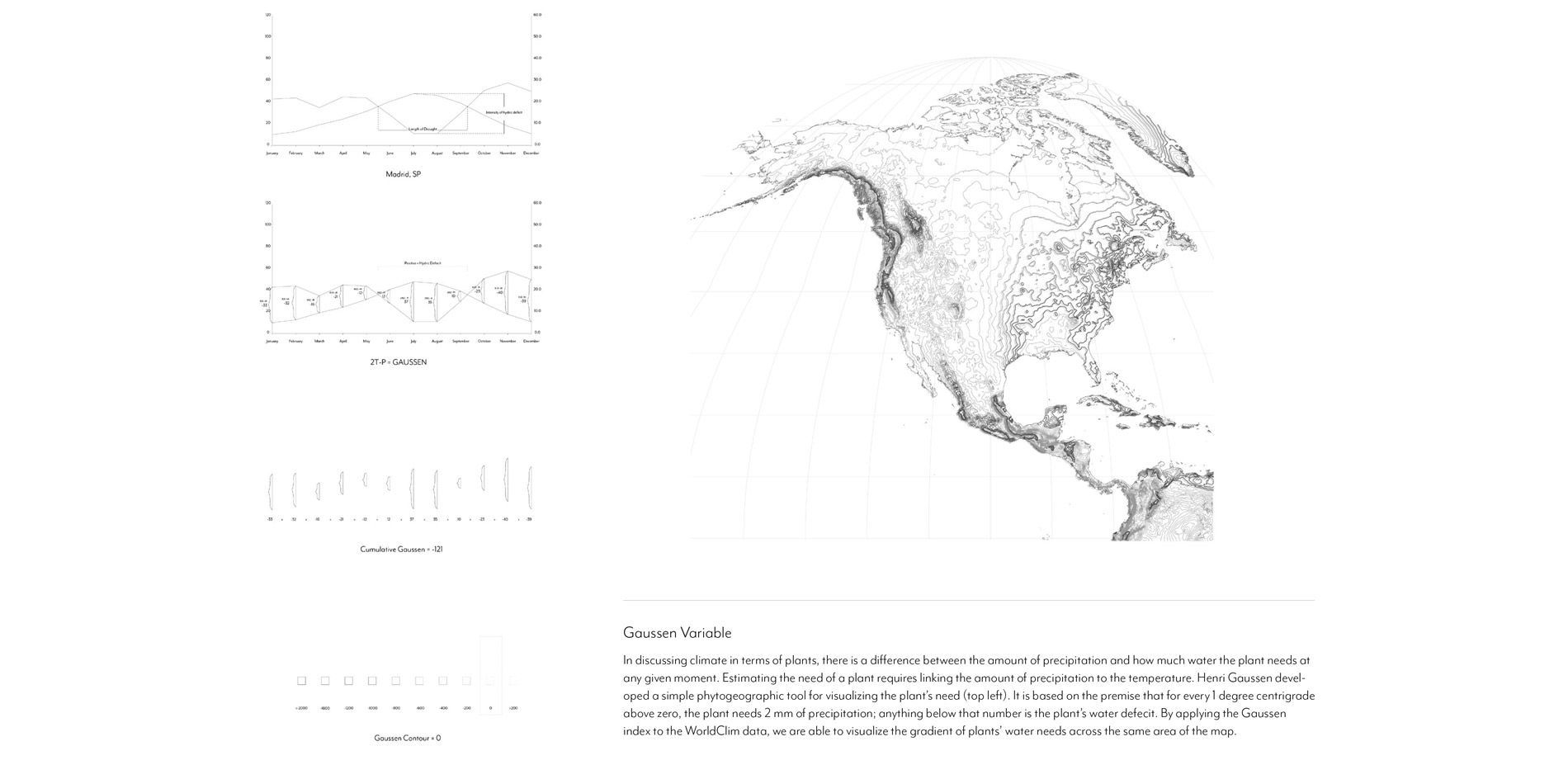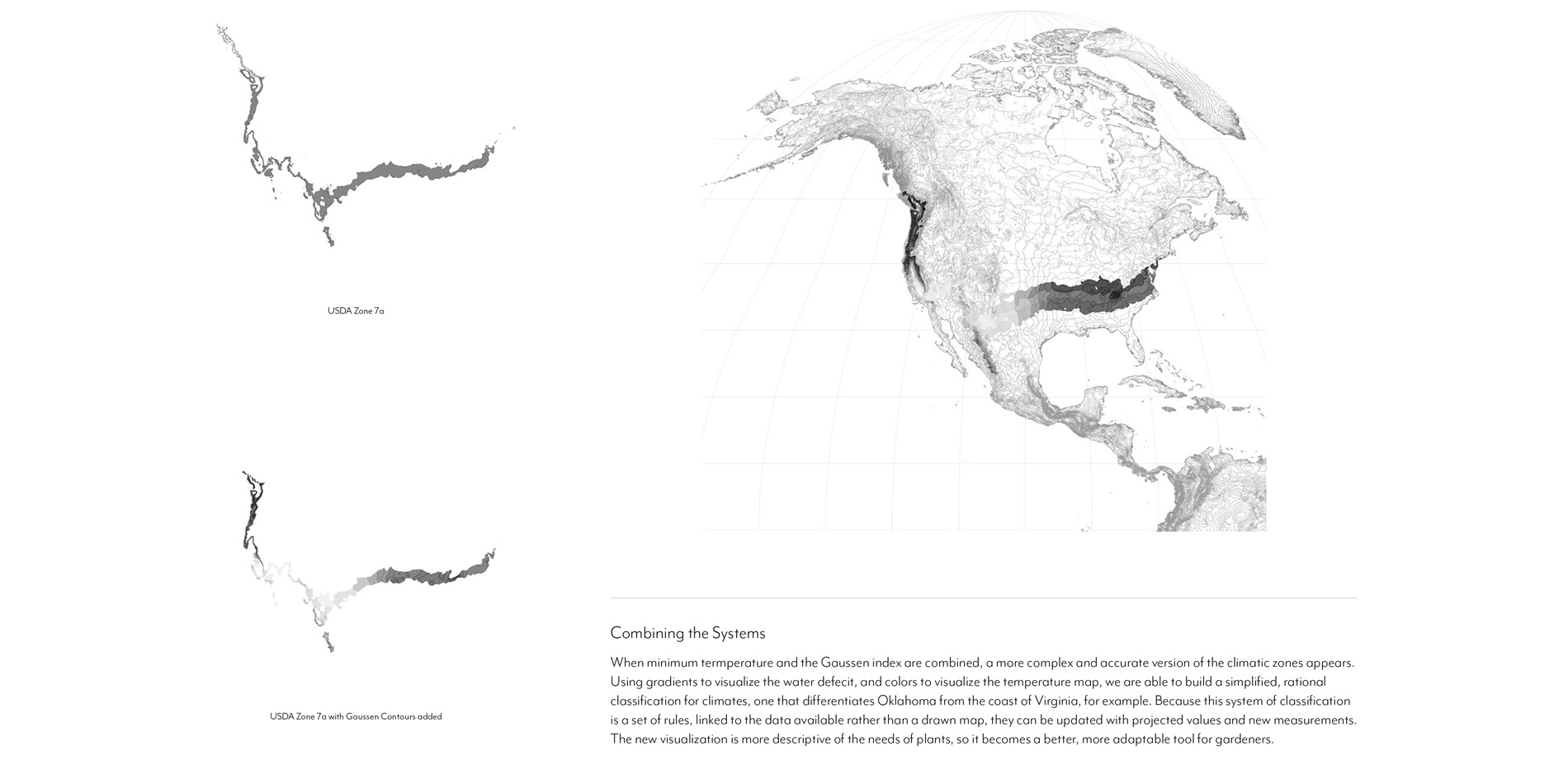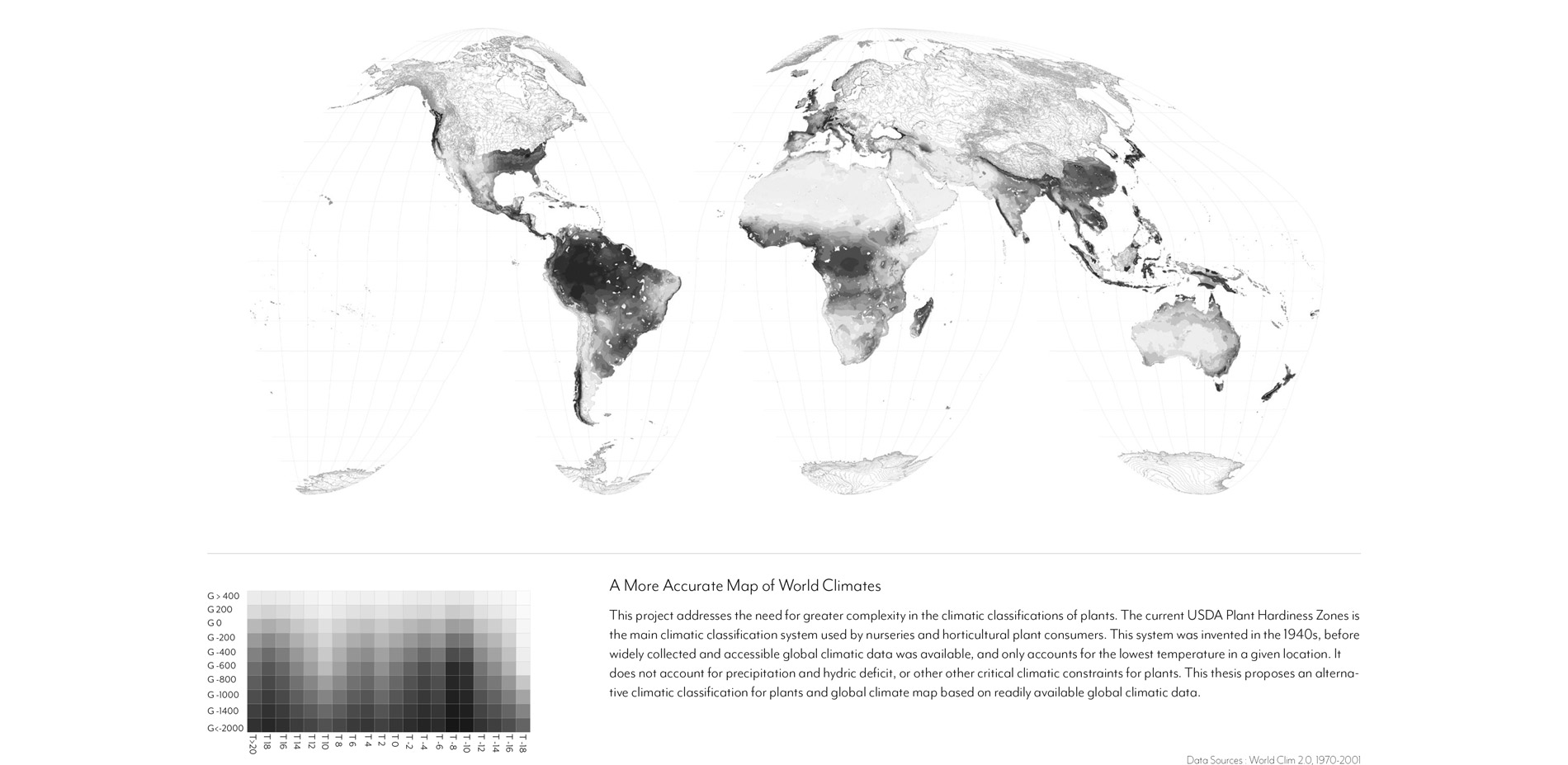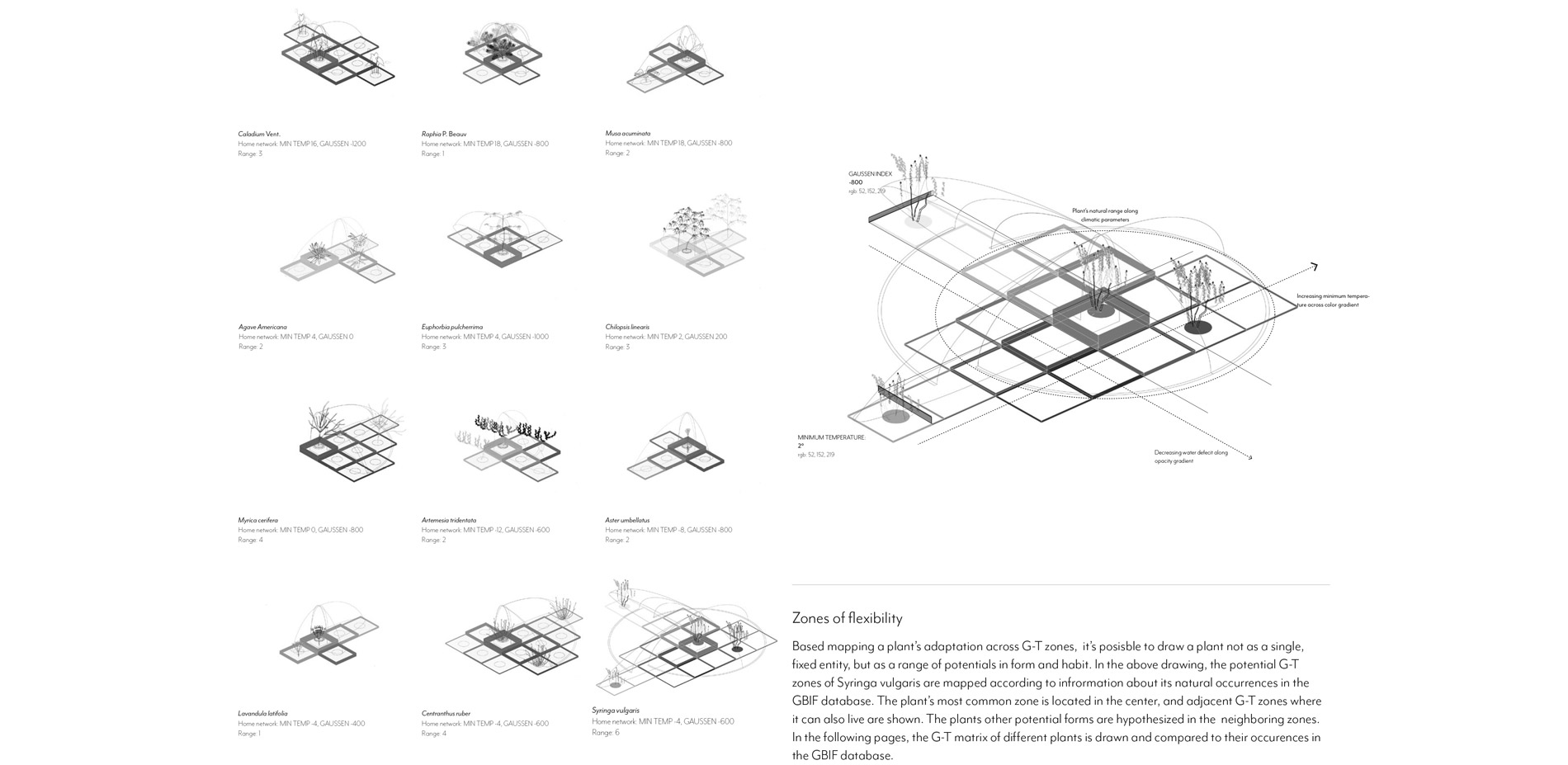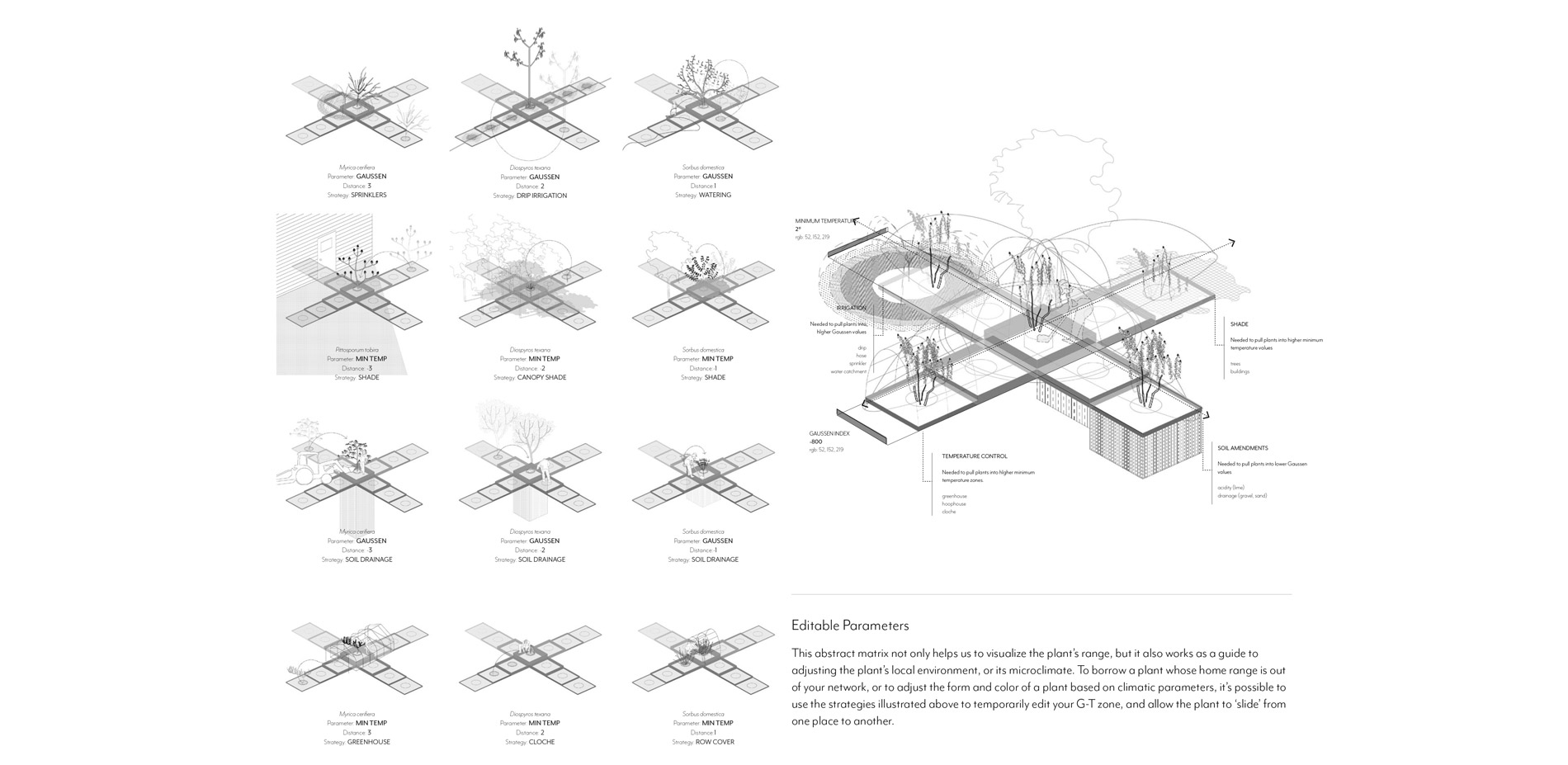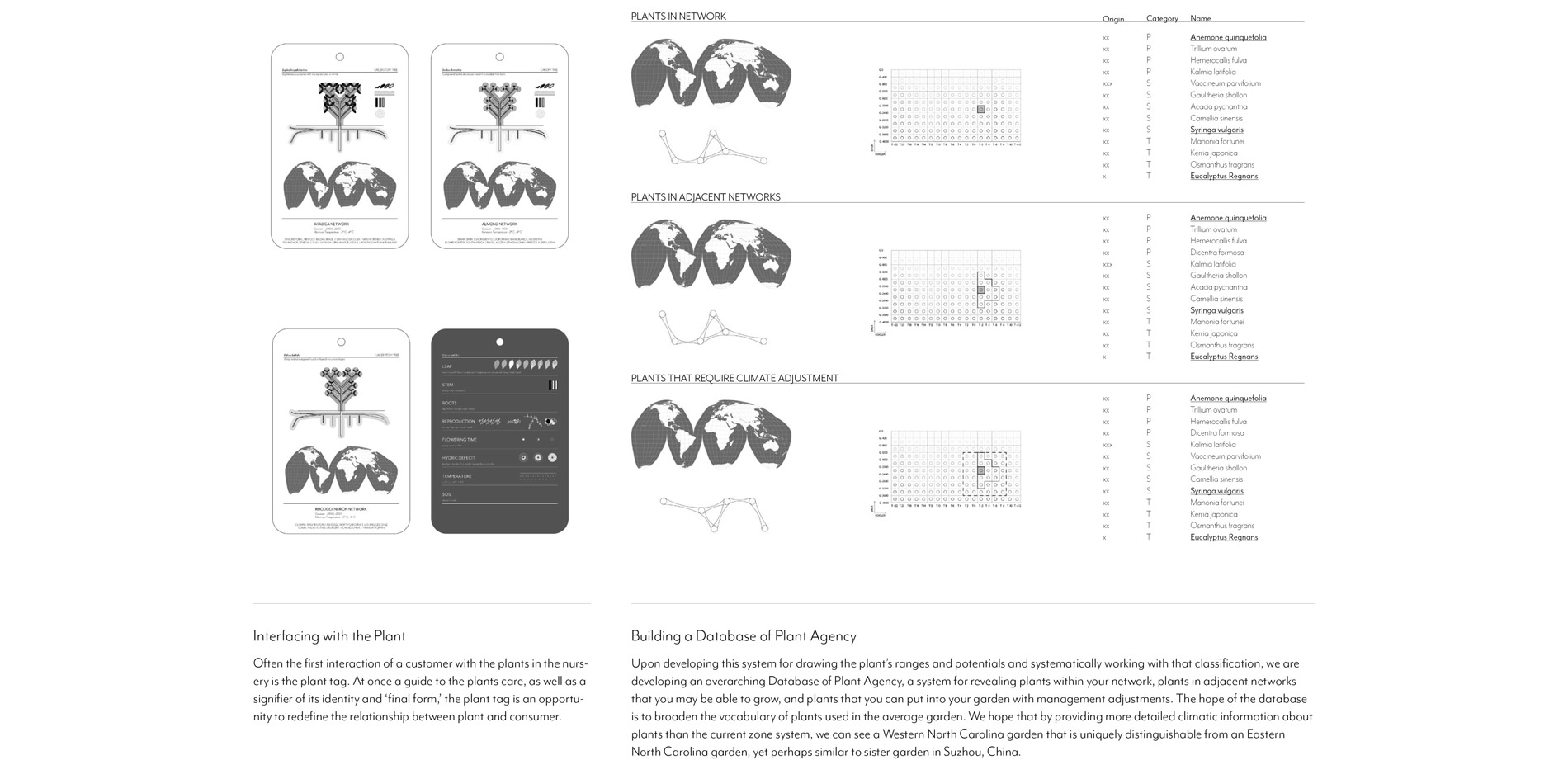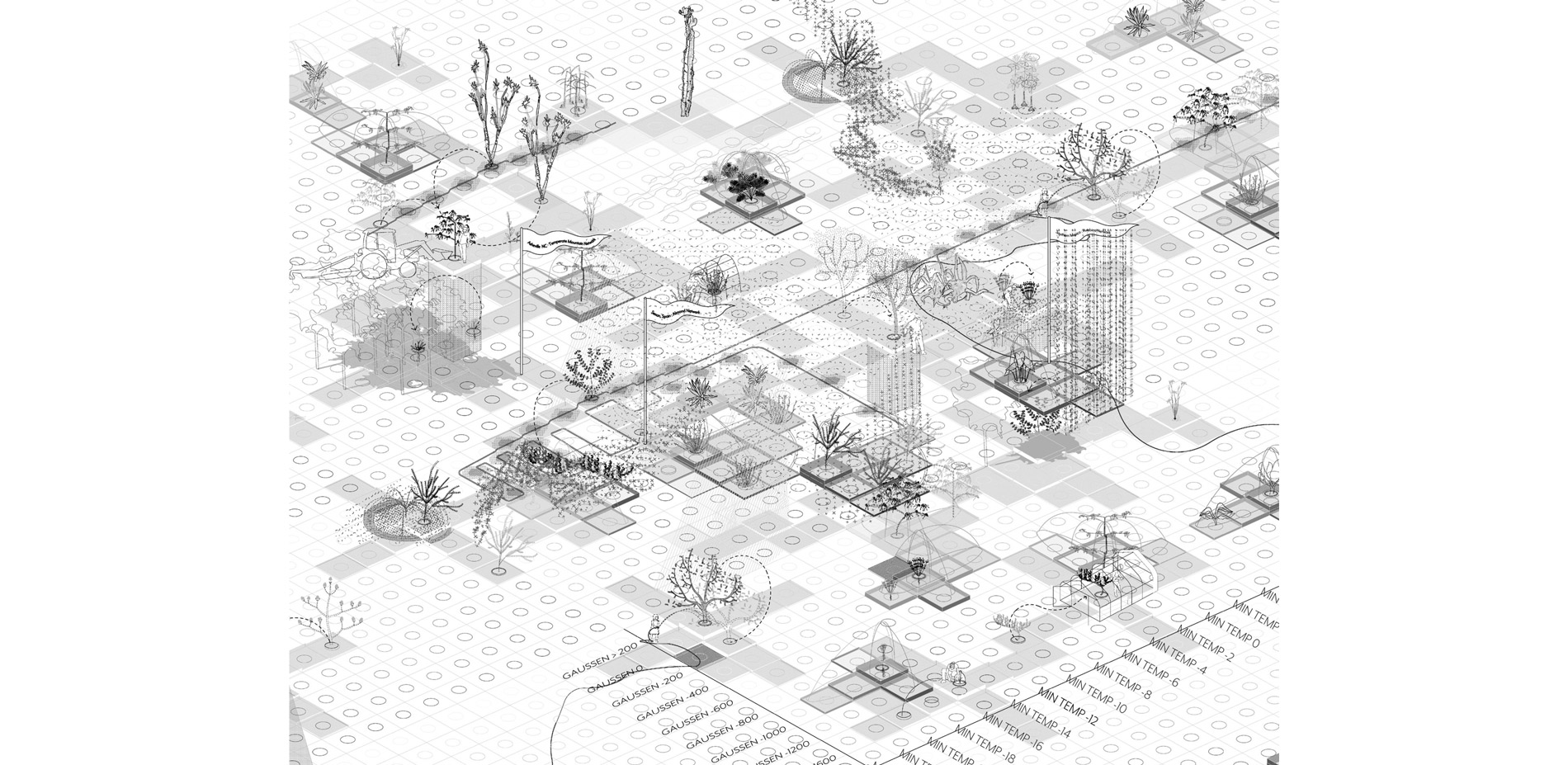The Living Things Nursery Catalogue and Guide to Climate
HONOR AWARD
Communications
Location Not Applicable | Bonnie-Kate Walker, Student ASLA | Faculty Advisors: Teresa Gali-Izard, ASLA
University of Virginia
It’s a provocative manifesto, but at the same time serious, offering an alternative universe presentation.
- 2018 Awards Jury
PROJECT STATEMENT
This project addresses the need for greater complexity in the climatic classifications of plants. The current USDA Plant Hardiness Zones is the main climatic classification system used by nurseries and horticultural plant consumers. This system was invented in the 1940s, before widely collected and accessible global climatic data was available, and only accounts for the lowest temperature in a given location. It does not account for precipitation and hydric deficit, or other other critical climatic constraints for plants. This thesis proposes an alternative climatic classification for plants and global climate map based on readily available global climatic data.
The use of a simplistic classification climatic classification reduces the capacity of landscape architects (and the average consumer) to engage with a plant's climatic intelligence. This thesis cultivates a better understanding of the relationship between plants and climate, and proposes a more attuned system for supporting that highly evolved relationship. Its goal is to enable greater climatic sensitivity in the plant pallette of the built environment, enhancing the capacity of landscapes to adapt during highly variable climatic shifts.
PROJECT NARRATIVE
The Living Things Nursery Catalogue and Guide to Climate is a document that uses a traditional format of the nursery catalogue and garden guide as a way of establishing norms and dispensing helpful tidbits about plants to those who consume them. The purpose of this catalogue, however, is to re-establish a relationship between climate and plants in the mind of the average plant lover, in an effort to gain a better popular understanding of how living things adapt to the climate in which they live. Among other drawings about the relationship between plants and the climates in which they live, this catalogue critiques the USDA Plant Hardiness Map, and proposes a more comprehensive alternative classification system in the third and final chapter. The catalogue begins with the following letter:
Dear customer,
The mission of Living Things Nursery is to produce knowledge about the livingness of plants. This is in an effort to not only demystify the workings of plants, but to contribute to a general culture of attention to the agencies, propensities, and intelligence of living things.
The LTN Catalogue of Plants and Guide to Climate is a response to the rapid loss of complexity in the ecologies produced by industrialized societies. The horticultural production industry has simplified and commodified plants to serve the goals of capitalist consumerism: plants are being bred to be dumb. They are grown to create consumerist trends: bigger flowers, faster development, and a ready-made final form. These goals strip plants of their intelligence, ignoring and often directly conflicting with plants' long-term climatic adaptations.
This trend contributes to a cycle of confusion and ambivalence about plants from the average buyer in the ornamental potted plant market. Ethnographic research in garden centers outside of London demonstrates a certain degree of discomfort among customers in choosing and discussing perennial plants, shrubs, and trees, but much more security in purchasing garden goods such as pots, patio furniture, and familiar, fast-growing annual plants.
Living Things Nursery seeks to develop a connection between buyer and plant. This connection is not to an object of purchase, but to a variable, intelligent being whose individuality can be explored through a relationship of care and attention. The premise of this document is to acknowledge that relationships with plants are less uncomfortable if we simply know more about how and why they live. If we know how plants think, we are more able to co-create rich, complex spaces with them.
The LTN catalogue synthesizes the intelligence of ecologists, anthropologists, and geographers of the past and present to explain the capacities of plants and the ecosystems they form. It also critiques, responds to, and edits the parameters on multiple contemporary, open-source databases, recognizing the potential of a moment in which one can interrogate her data rather than simply inherit it. The goal is to translate ideas, some as big as the globe and some as small as the leaf, into a multi-scalar, drawing-based analysis.
We are at a moment where a greater climatic intelligence is critical. Unable to move quickly, put on a jacket, or turn on an air conditioner, plants have to endure gradual and abrupt changes in climate and weather, making them the most responsive beings on Earth. The plant is "a meteorological instrument which integrates the various factors of climate and which, with experience, can be "read" like a thermometer or a rain gauge." An openness to learning from plants will play a transformative role in our collective decision-making amidst the current climate crisis.
Sincerely,
The Living Things Nursery
Through three chapters, the catalogue seeks to make an argument for a cultivating a greater climatic intelligence by paying attention to plants, and developing systems for understanding plants that reflect that attention.
The first chapter is a drawing-based analysis of the adaptations of three major plant groups to the climates in which they live: perennials, shrubs, and trees. The studies of perennial plants rely on the work of Danish plant geographer Christian Raunkiaer to reveal how root adaptations (bulbs, corms, and tubers) developed as a way to survive suboptimal thermal conditions, and guided specific forms of adaptation. The studies of shrubs rely largely on the work of Thomas Givnish to reveal the ways in which plants adapt their leaves to specific climatic requirements. The third part is a brief exploration of tree architecture, based on the work of Francis Halle, a French botanist. In all three parts, the ideas of these plant scientists are drawn systematically as a way of clarifying and organizing the plant's morphological responses to climate. They are also tested using an open-source database for plant geography, the Global Biodiversity Information Facility.
The second chapter takes a historical perspective of the nursery industry's role in the horticultural breeding of plants and the overall homogenization the ornamental plant market. It relies largely on statistical data from AIPH (the International Association of Horticultural Producers) and from a historical study of plant breeding and plant migration in two volumes written by Judith M. Taylor, The Global Migrations of Ornamental Plants: How the World Got into Your Garden (2009) and Visions of Loveliness: Great Flower Breeders of the Past (2014). In interrogating the homogenization of ornamental plants by removing their contextual constraint, the chapter calls for a more decentralized nursery industry and network of plant movement.
The third and most critical chapter presents a core element of the thesis: an alternative map to the USDA plant hardiness zones. The current USDA Plant Hardiness Zones is the main climatic classification system used by nurseries and horticultural plant consumers. This system was invented in the 1940s, before widely collected and accessible global climatic data was available, and only accounts for the lowest temperature in a given location. It does not account for precipitation and hydric deficit, or other other critical climatic constraints for plants.
The proposed classification system uses an index developed by climatologist Henri Gaussen that combines temperature and precipitation in a single variable that measures hydric deficit or hydric surplus. Using precipitation and temperature data from the WorldClim 2.0 dataset (an open source database for highly detailed climate data), the classification maps the Gaussen index for the first time at a global scale. By overlaying the Gaussen index with the minimum temperature model, the map reveals zones of similarity that are much more climatically aligned than a typical single temperature zone that encompasses many different precipitation patterns. These zones of similarity can be grouped into plant-based networks, that potentially serve as skeletal infrastructure for a more decentralized nursery-exchange system and a plant palette for landscape architects that is more specific than the horticultural flavor-of-the-month, and more creative than limiting to native plants. The third chapter also begins to survey specific plant species and their climatic ranges according to the new classifications, and establishes a drawing language that allows for plants to be grouped into their respective networks. The catalogue ends by urging the development of an online plant database that nursery practitioners and consumers can use to understand the climatic constraints of the plants, as well as their global, climatically-specific plant palette.
The use of a simplistic classification climatic classification reduces the capacity of landscape architects (and the average consumer) to engage with a plant's climatic intelligence. This thesis cultivates a better understanding of the relationship between plants and climate, and proposes a more attuned system for supporting that highly evolved relationship. Its goal is to enable greater climatic sensitivity in the plant pallette of the built environment, enhancing the capacity of landscapes to adapt during highly variable climatic shifts.
